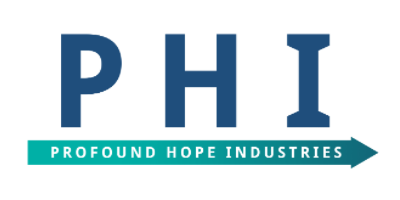Top 5 Mistakes Nonprofits and Businesses Commit in Writing State and Federal Economic and Community Development Grant Applications
Avoid common mistakes on your next funding application! A grant application takes a significant amount of time and attention. On average, a state or federal grant can take 120 hours of work. This is weeks of your team’s time! If you are going to spend time or hire a consultant to write an application, it is worthwhile to spend the time preparing for the entire scope of a grant application – from the pre-writing to the execution of a funded project. Your aim is to win the award.
There are 5 common mistakes that non-profits and businesses make when applying for new funding sources. Here are the pitfalls and a “what-to-do-instead.”
1. Lack of a clear application strategy

It is not uncommon for an organization to receive an award announcement and quickly decide to respond. Funding is the engine that drives work. It is natural for people to want to pursue opportunities. Fast decisions around how new funding might be spent can lead to less-than-effective strategies. Without a clear picture of how new funding or projects might fit into the overall strategic plans and current goals, you are doing yourself a disservice.
Take the time to think through potential funding opportunities and ask good questions. Most importantly, review how the grant aligns with the strategic goals you set before you were confronted with the opportunity you are considering. Ensure you can answer the question: “How will this funding be used to drive our strategic vision forward, and specifically, what is the best way to position this money for leverage?” If you know grant applications are part of your organization’s process, build a “uses of funds” list at the beginning of every fiscal year so you can plan ahead and have a template to access when a new opportunity arises.
How will this funding be used to drive our strategic vision forward, and specifically, what is the best way to position this money for leverage?
Sarah Hope Marshall, Profound Hope Industries
2. Inadequate background on the problem being addressed.

Let’s face it – competitive funding cycles do not often allow time for community research. It is critical that your organization knows the community and people you are trying to serve very well before applying for a grant. Applications fail because the approach you propose is not grounded in the reality of the problem you are suggesting you will solve. Grant applications are competitive. If another organization can position itself as more knowledgeable of an issue (along with the expertise to match or a clear plan to hire expertise), your application might fall to the bottom of the proposal pile!
Focus is key. Don’t let an application redirect you to solve new issues before you are ready. You will be scrambling to catch up, even if you do win. An annual planning process or demographic research will provide clarity AND help you prepare to take on new opportunities. Strategic plans or demographic research should describe a process for preparation, research, due diligence, and community engagement so you are truly ready when a funding opportunity appears.
3. Poor alignment with the funder’s goals.

This mistake is the scenario in which your organization is truly chasing dollars instead of initiating a thoughtful process. It might also overlap with the prior two problems. The cause is typically concern about your balance sheet, which drives attempts to bring in new money. It also happens because it is easy to get ‘shiny object syndrome;’ wanting to make sure you do not miss opportunities your peers are excited about. Either situation may lead to spending time, resources, and effort on grant applications that are not a great fit for you. If you do get awarded, the project may be more burdensome than you hoped because the alignment was not there in the first place.
Recognize that not all grant money is good money for YOUR specific structure. Be comfortable saying no to opportunities that are not a great fit (even if you are selectively invited). Saying no leaves more room to say yes to the RIGHT projects.
4. Lack of evidence to support the story being told in the narrative

This pain point can arise either before or after a new award. The problem arises from a lack of attention to metrics and tracking. Your organizational data is your ‘evidence’ that you have the right team and strategy in place to execute the funder’s goals. It is important to remember that a grant application truly is a proposal about how your organization will solve a social problem. Sometimes, funding will come along for emerging projects or new opportunities. However, your funder has priorities, and they typically want the most experienced candidates with a proven track record to do the work. Think of this as it relates to your own hiring process! You want the best person for the job – so do your funders.
Put systems in place to track your impact stories and present your case. Collect stories of your good work. Use them in marketing throughout the year, as well as in your applications. Data collection and metric tracking are important. The more you can demonstrate you can do what you have proposed, the more likely you are to get new and continued funding.
5. Overstating capacity to perform the grant objectives

Organizational culture can fall to the bottom of the list when considering whether to apply for a new opportunity, but it is mission-critical. You have an existing team and resources, and they have limits! When staff gets burned out or overextended, it increases the likelihood that a project will not go as planned. This leads to poor results in grant performance, high turnover, and a lower quality experience for your project beneficiaries. It is easy to take a “we will grow once we get funding” approach. Sometimes, this works, and new funding will allow for growth in ways that lead to efficiency.
It is important to avoid overstating capacity by being honest with yourself about your existing resources. Go back to the drawing board and ask whether this is a ‘right now’ opportunity or one to save for later. When employees feel that leadership understands and respects their needs, they are also more likely to be engaged and produce better results. You can use it to tell better stories about your capacity, build a team ready for the next project, and build a strong track record that will win awards.
Proper planning, research, and processes can avoid these mistakes. When you are in the middle of high-impact work that addresses pressing social problems, it can be hard to step back and be thoughtful about your next steps. However, taking the time to do so will help you produce higher-quality, more competitive applications and become crystal clear on how to solve new and complex problems.
Profound Hope Industries is here to help. For a no-obligation consultation, contact us here.



